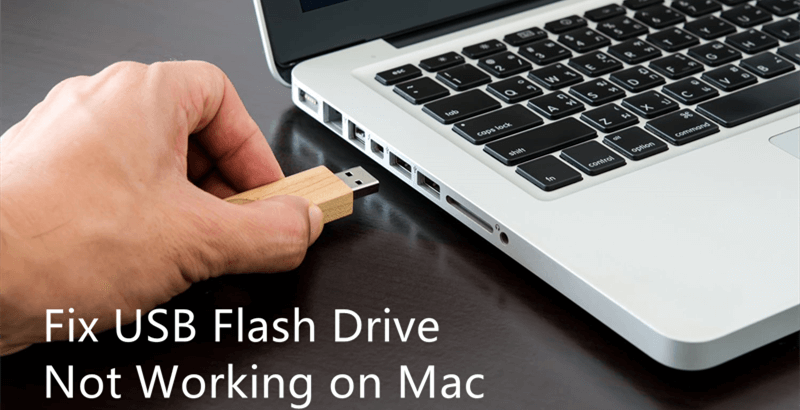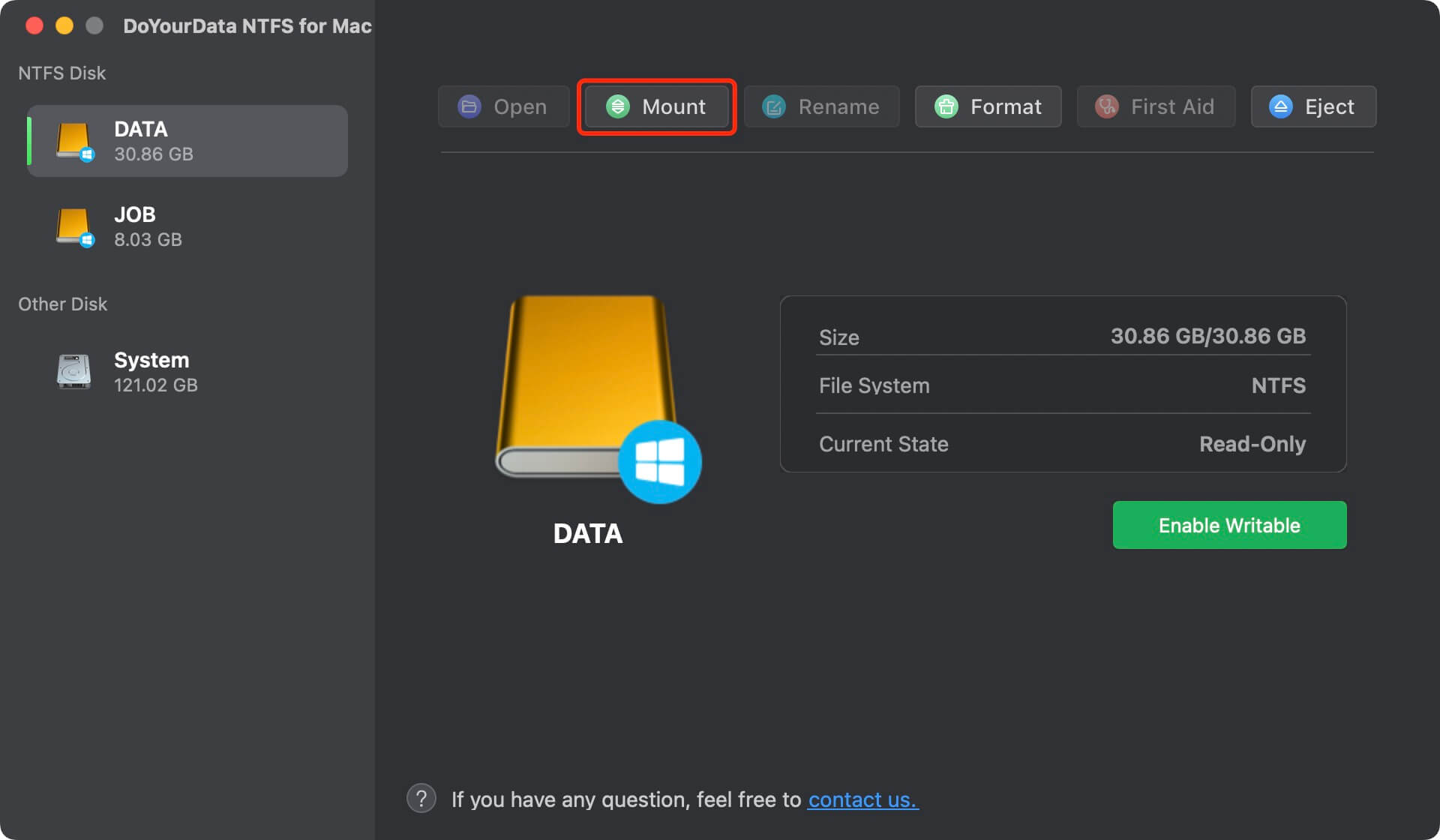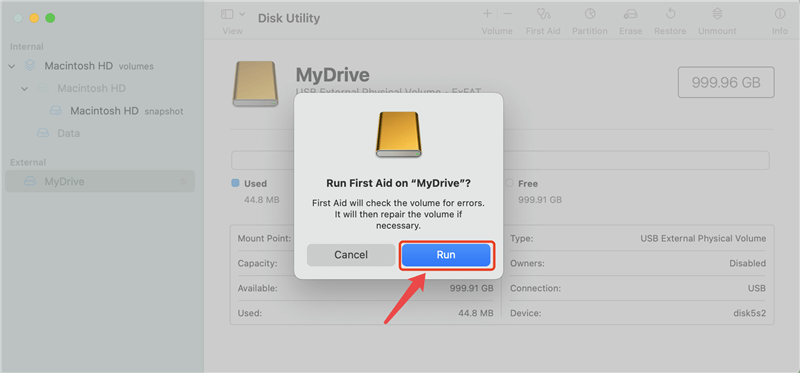Quick Navigation:
- #1 Methods to Fix Non-working USB Flash Drive on Mac without Erasing
- #2 Fix Read-only USB Flash Drive on Mac with NTFS for Mac
- #3 Fix Non-working USB Flash Drive on Mac Using Disk Utility
- #4 FAQs About Fixing Non-functional USB Flash Drive on Mac
Portable storage devices like USB flash drives now play an essential role in our digital life, allowing us to take our most important information and documents wherever we go. However, a non-functioning USB flash drive on a Mac can cause stress and irritation.
Fixing the problem without wiping the drive's contents may seem impossible, but with the appropriate strategy, it is often feasible to restore your data. In this detailed tutorial, we will explore the methods and software needed to fix a broken USB flash drive on a Mac without risking the information stored on it.

Methods to Fix Non-working USB Flash Drive on Mac without Erasing
| Why the USB drive not working | How to fix it |
|---|---|
| Unstable connection, bad port, improper USB hub, etc. | The USB port or cable may be broken, which would explain why the USB flash drive isn't reading. First, insert the USB drive into many different USB ports on the Mac. Use a different USB cord if you have access to one. Trying a different connection may solve the problem if your USB drive needs to be recognized. You also can try to connect the USB flash drive to another computer to see if it would work. |
| Mac OS issue, task conflict, etc. | Restarting your Mac is a quick troubleshooting procedure. You can fix any temporary problems with your USB drive by restarting your computer. Reconnect the USB drive and see whether the problem persists after you've restarted. If the macOS is outdated, just upgrade to the latest macOS version and try again. |
| You have set the USB flash drive to read-only and you can not write data to it. | Right-click the USB flash drive on the desktop and select Get Info. Then reset it to read-write. |
| The USB flash drive is not showing up on desktop and Finder due to improper Finder settings. | Open a Finder and click Finder on Apple menu, choose Settings. Then click General and Sidebar, select External disks. Then the USB flash drive will show up on Desktop and Finder’s sidebar. |
| USB flash drive is unmounted. | Open Disk Utility, find the USB flash drive and click Mount. Then check if it could mount on your Mac. |
Fix Read-only USB Flash Drive on Mac with NTFS for Mac
Open Disk Utility, find the USB flash drive and click it to check if it is an NTFS drive. If the USB flash drive has been formatted with NTFS file system, you can only read contents stored on it, but can not write any file to it. To solve this issue without formatting the USB flash drive to Mac-compatible file system, just download and install an NTFS for Mac tool on your Mac.
DoYourData NTFS for Mac is an easy-to-use NTFS for Mac tool. It can help you quickly mount the USB flash drive and enable full read-write for it.
Open DoYourData NTFS for Mac, then under NTFS disk, find the USB flash drive and select it. If it is not mounting, just click on Mount button.

Then click Enable Writable button. It will quickly grant full read-write access to any NTFS drive on your Mac.

Fix Non-working USB Flash Drive on Mac Using Disk Utility
If the methods above can not help you fix the non-working USB flash drive on your Mac, just use First Aid of Disk Utility to help you repair the USB flash drive.
- Open Disk Utility.
- Find and select the USB flash drive.
- Click First Aid > Run.
- Repair the damaged USB flash drive.

If you have lost data due to erasing the USB flash drive, just use data recovery software - such as Do Your Data Recovery for Mac to help you recover erasing files.
Step 1. Download and install Do Your Data Recovery for Mac, then open it. Select the USB flash drive to start data recovery.

Step 2. Click on Scan button to deeply scan the USB flash drive and find all recoverable files.

Step 3. Once the scan is completed, you can preview all recoverable files. Select the wanted files and save them.

FAQs About Fixing Non-functional USB Flash Drive on Mac
1. How to fix damaged USB flash drive on Mac?
- Open Launchpad > Other > Disk Utility.
- Connect the USB flash drive to your Mac and you can see it on Disk Utility.
- Select the USB flash drive, click First Aid.
- Run First Aid on the USB flash drive to fix logical errors.
2. How to fix unrecognized USB flash drive on a Windows PC?
The USB drive likely has the same drive letter as some of your other disks. That could prevent your USB drive from being seen or recognized.
- Step 1: Select "Disk Management" from the menu when right-click the Windows icon.
- Step 2: Alter the drive letter by right-clicking the USB device.
- Step 3: Rename the drive and save your changes.
3. How to fix not working USB flash drive on Mac with Terminal?
If First Aid in Disk Utility does not fix the problem, use Terminal, macOS's command-line interface. To find out which USB drive you have, type 'diskutil list' into Terminal (Applications > Utilities > Terminal), and if that doesn't work, try 'diskutil repairVolume [drive identifier]'. Because Terminal commands can make permanent changes to your file system, you should use caution and verify all commands before entering them.
4. How to recover lost data from non-working USB drive on Mac?
Data recovery software for Mac can rescue files from a damaged or formatted USB flash drive. For the recovery software to function, the operating system must first see the drive.
- Download and install Do Your Data Recovery for Mac.
- Connect the USB flash drive to your Mac and open Do Your Data Recovery for Mac.
- Select the USB flash drive and click Scan.
- Preview and recover lost files once the scan is completed.
If all else fails and the information on your USB device is crucial, consider hiring a data recovery service. Experts in this field know how to determine how bad a USB drive is and how to fix it using cutting-edge data recovery methods. However, the costs associated with this choice can add up, so looking at do-it-yourself options is encouraged first.
Conclusion:
A non-functioning USB drive on a Mac can be frustrating, but it's important to take a systematic and patient approach to fixing the problem. Following the instructions and using the right software, you can retrieve your files without reformatting the USB drive.
Be sure to back up your data periodically to avoid any potential catastrophes. When handled properly, many dead USB drives can be brought back to life, rescuing your precious data from the verge of destruction.